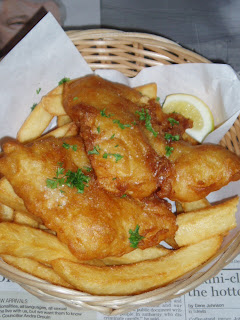
There's a café on Fort Street in downtown Auckland called
Ben. The coffee's excellent - every time. That's because its owner Ben Boyle is a great barista.
You only have to watch him at work to see he takes not just his, but everyone's coffee seriously.
His coffee machine's from Seattle. It's like an extension of his body. He darts from machine to till to table, totally consumed in making coffee, tweaking a lever with one hand whilst pouring milk with the other and bending down to pull something from the fridge with... well, maybe his left foot - he was too quick, I can't quite say how he did it.
And the whole time he's answering my banal questions with calm patience and dodging the camera when required.
At one point he flies back to the counter with coffee cups balanced up to his chin and a new order in his hand.

He turns the coffees out super quick. "You have to really," he says, matter-of-factly.
Ben opened its doors three months ago and Ben is putting in 80-hour weeks and turning out 350 coffees a day. But at least it's his own place, he says, and he obviously doesn't mind hard work.
So what's the biggest crime a barista can commit? Failing to bring out the best of the beans. In other words, not knowing what the end product is supposed to taste like. Which comes from lack of knowledge or passion to strive for the best. "A good coffee should be a relationship between the roaster, barista and customer," Ben says. It's like a chef selecting the best ingredients then combining and transforming them into the best possible dish.
If Ben ever has time for

a coffee break, he'll go for a flat-white. There's nothing wrong with milk in your coffee, apparently, as most beans these days are roasted to be made into lattés, cappucinos and flat-whites.
Ben's flat-whites are velvety and creamy - even the ones made with low-fat milk. They're also pretty strong. That's because he never under-extracts the beans. He uses a generous dose of ground coffee (18g) to make a 40ml shot of espresso. That's about double the amount that the big chains would use. So where Ben will get 50 espressos from a one kilo sack of beans, the big chains will rack up 100 from the same amount. So even if their coffee's cheaper (which it rarely is), it's only the chains that are benefitting, not you. Unless you like your coffee watery, that is.
Italy might still be the coffee capital of the world but the coffee scene's pretty good in Auckland, Ben reckons. In Wellington, though, they like their coffee strong. There, a standard coffee is now made with a double shot of espresso.
Auckland's still largely a single-shot city but Ben finds that people are wanting their coffee stronger and stronger these days. So he compromises and uses a shot-and-a-half in his. He thinks it's only a matter of time before Auckland goes double, too.

Ben makes it all look so easy but it's not, as I discover. Even steaming the milk to the right temperature without adding too much air requires skill and experience. Once I've sprayed hot air around the jug and surrounding area, my attempt to transform an espresso into a flat-white with a pretty pattern on the top is quite dismal.
It's still a nice coffee, though, even if it's a little cold by the time I get round to drinking it.
 I’d had a bit of bother with my ipod shuffle – I couldn’t upload any tracks - so I took it into the Apple shop, fearing the worst. No need - it's now bursting with 200 tracks (something to do with Consolidation), so I cross the road to the Strawberry Alarmclock to celebrate with a much-needed double latté.
I’d had a bit of bother with my ipod shuffle – I couldn’t upload any tracks - so I took it into the Apple shop, fearing the worst. No need - it's now bursting with 200 tracks (something to do with Consolidation), so I cross the road to the Strawberry Alarmclock to celebrate with a much-needed double latté. The connection's a bit slow and cuts out several times. Where are those routers when you need one?
The connection's a bit slow and cuts out several times. Where are those routers when you need one? Is there such a thing? It's a bit like requesting the perfect meal. Do you have one? Just one? For me it varies each day. Yesterday it was chicken liver terrine with a glass of Cotes du Rhone at midnight. Today it's poached eggs on crusty toast with a cup of tea. I haven't got round to making that yet though. I'm out of eggs.
Is there such a thing? It's a bit like requesting the perfect meal. Do you have one? Just one? For me it varies each day. Yesterday it was chicken liver terrine with a glass of Cotes du Rhone at midnight. Today it's poached eggs on crusty toast with a cup of tea. I haven't got round to making that yet though. I'm out of eggs.







 It's amazing what you come across on foot if you keep your eyes peeled. The other day I walked into a stack of old food magazines dumped by a recycling bin in Ponsonby.
It's amazing what you come across on foot if you keep your eyes peeled. The other day I walked into a stack of old food magazines dumped by a recycling bin in Ponsonby.
 He turns the coffees out super quick. "You have to really," he says, matter-of-factly.
He turns the coffees out super quick. "You have to really," he says, matter-of-factly.
